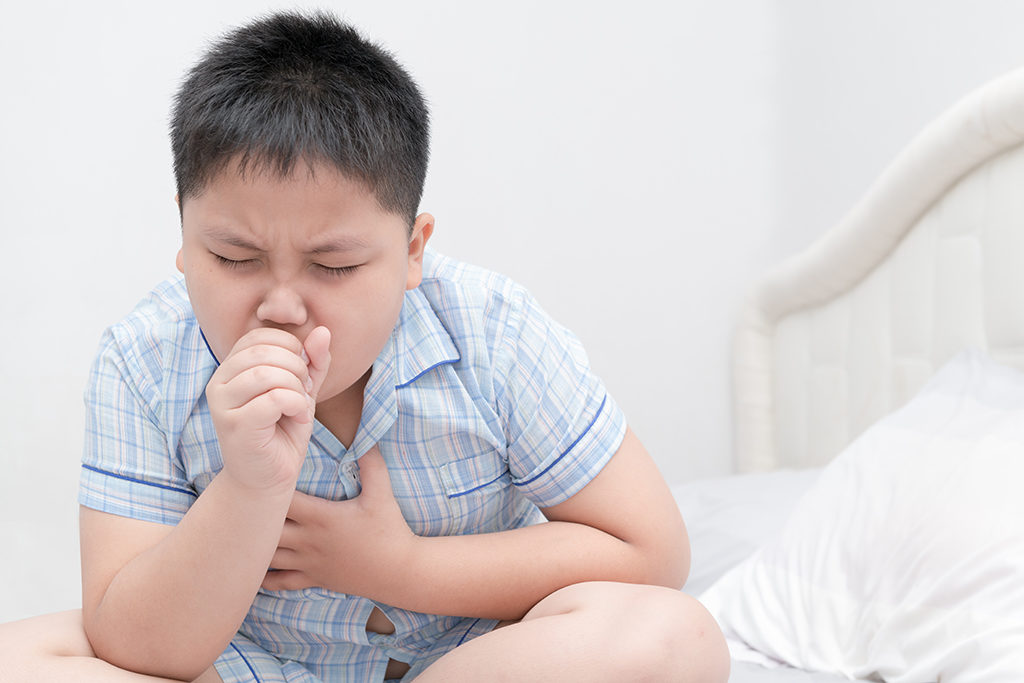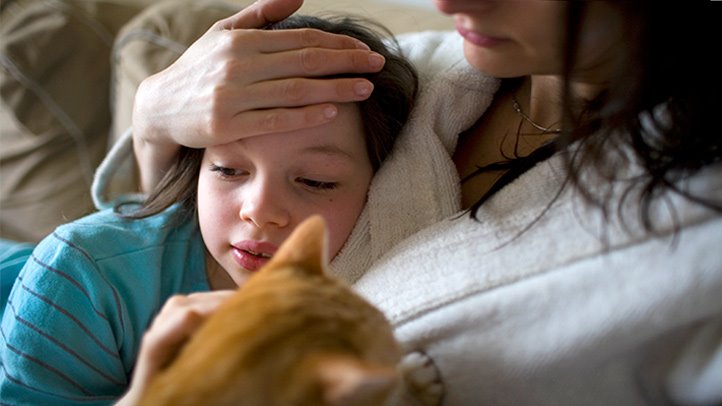Asthma is one of the most common chronic diseases of childhood currently affecting an estimated 6.1 million children under 18 years. The chronic condition affects airways resulting in wheezing and making it hard to breathe. Several factors can cause irritation in the airways, such as allergies, cold air, chemicals in the air, exercise, the common cold, or even stress.
Childhood asthma isn’t different from asthma in adults, but children face unique challenges. Unfortunately, childhood asthma cannot be cured, and symptoms can continue into adulthood. But with the right treatment, your child can keep symptoms under control and prevent damage to growing lungs.
Common Symptoms of Childhood Asthma
Common childhood asthma symptoms include:

- Frequent coughing that worsens with a viral infection, especially when your child is asleep or exercises or is exposed to cold air
- A whistling or wheezing sound when breathing out
- Shortness of breath
- Chest congestion or tightness
Childhood asthma may also cause:
- Trouble sleeping due to shortness of breath
- Bouts of coughing or wheezing that worsens with a cold or flu
- Delayed recovery or bronchitis, especially after a respiratory infection
- Troubled breathing
- Fatigue
Asthma symptoms vary from child to child and can get worse or better with time. Your child may have just one indication, such as chest congestion or lingering cough.
Three Things You May Not Know about Childhood Asthma
Here are three things you might not know about childhood asthma.
1. Asthma Symptoms Can Come and Go
Many times, I’ve had parents say that their child doesn’t have asthma because they don’t or hardly ever wheeze. It is possible — common, even — to wheeze with a severe cold or lung infection and not have asthma. But if that happens a couple of times or more than that, then it’s most likely asthma.
It is understandable to want to dodge the diagnosis — who wants their children to have a chronic disease? But it is important to make the diagnosis because that way parents can be watchful and figure out what triggers a child’s symptoms. Once we are aware of the triggers and can tell from the signs that an asthma attack is about to begin, there is a lot we can do to help the child.

We can avoid triggers, like by staying away from cats. We can manage the triggers, like by wearing a scarf over the mouth and nose in cold weather, or by using an inhaler before exercising. We can be sure they get a flu shot, as influenza can make children with asthma very sick.
The goal is always to help children with asthma lead the healthiest, most normal lives possible. We can’t do that if the diagnosis remains incomplete.
2. Your Child Can Have Asthma Without You Hearing a Wheeze
The wheezing is often not obvious; you may need trained ears or a stethoscope to hear it. Some children with asthma don’t wheeze at all: they just cough. Coughing is one of the main symptoms of asthma in most cases. It’s how the child’s body tries to get and keep the airway tubes open.
There are, however, plenty of other reasons why children cough. The common cold and postnasal drip from allergies are the common reasons behind them coughing. But if your child coughs frequently at night or after exercising, suffers from a nagging dry cough, or gets a bad, lingering cough with cold, you must consult a doctor as it could be asthma.
3. Asthma Is Treatable
As mentioned above, what we most want is for children with asthma to lead normal, healthy lives. And here’s the truth: we can make that happen. We can both prevent and manage triggers and use medications to relieve symptoms.
A steroid inhaler or preventative medication, used every day or during periods when asthma is worse or might get worse, makes all the difference in most cases. While some parents get nervous when they think of giving steroids to their children, the dose is usually low — and while some parents may find daily medications challenging, there are several strategies to make it work. For many children, preventative medication can make a big difference between wheezing all the time and not wheezing at all.
Treatment for Childhood Asthma
Consult a doctor to set your child on the right track with an action plan with treatment goals tailored for your child. With the right treatment, your child can sleep through the night, avoid missing school, and breathe more easily. The treatment plan will help determine when your child’s asthma is under control, when you need to change medicines, or when emergency help is required.
Your child’s treatment will depend on the frequency and severity of symptoms. To deal with childhood asthma, your doctor may prescribe two types of medicines:
- Quick relief: Any child who has asthma needs a quick-relief medicine to treat coughing, wheezing, and shortness of breath, or unforeseen asthma attack. This medicine – typically an inhaler – is always asked to be kept with a child for use at the first sign of symptoms
- Long-term control: This type of medicine is needed by some children to treat inflammation of the airways. In long-term control, asthma medications are taken daily to prevent symptoms and attacks
Childhood Asthma and Coronavirus
Children diagnosed with asthma are at higher risk for succumbing to COVID-19, even though their symptoms may not be as severe as those of adults. Parents and caregivers can reduce chances of exposing their children with asthma to the virus by preventing asthma attacks that are likely to lead to hospitalization. And although asthma symptoms vary from one child to another, most symptoms can be controlled using proper preventative techniques.
Because families are mandated to stay at home, households are busier and more crowded than usual. To maintain a healthy home, keep in mind the following:
- Do not clean if your children are in the same room and do not use harsh chemicals
- Use green products for cleaning or look for combinations that include chemically-safe products
- Dust your home using a damp towel to prevent dust from dispersing into the air
- Open the windows to ventilate the house
- When cooking, turn on the stove vent to decrease indoor air pollution
- If using a printer frequently, open a window to ventilate the room. Printers contribute to indoor air pollution
- Ensure that all asthma medications are stocked up as needed
- Ask if your physician offers online or telephone appointments to avoid going to doctor’s offices or hospitals
Asthma attacks are a startling experience for many. Now, more than ever, it’s imperative that parents keep their children’s asthma symptoms controlled to reduce risk of exposure to COVID-19.
When to Seek Emergency Treatment
In severe cases, you may see your child’s chest and sides pulling inward as he or she struggles to breathe. Your child might have an increased heartbeat, sweating, and chest pain. Seek emergency care if your child:
- Has to stop in midsentence to catch a breath
- Is using abdominal muscles to breathe
- Has widened nostrils when inhaling
Even if your child has not yet been diagnosed with asthma, seek medical help immediately if he/she has trouble breathing. Although episodes of asthma vary in severity, asthma attacks can start with coughing, which usually progresses to labored breathing and wheezing.


